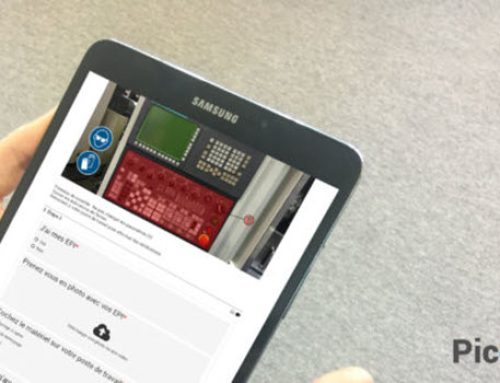You should know that in the industrial field, the different manufacturing processes might encounter problems and obstacles at any time with non-compliant parts for instance. Any equipment malfunction engenders productivity loss or even useless repair expenses. Despite the implementation of the best quality management systems, problems can still occur. Therefore, you must think about preventing the recurring problems through problem solving techniques. For this reason, you must deal with the cause of the problem otherwise it will constantly reoccur.
A root cause analysis (RCA) helps to identify the real cause of the problem. In fact, when a problem arises, several methods and corrective actions are to be applied in order to solve it as effectively as possible. Finding the causes of the problem makes it easier to find solutions.
What is a Root cause analysis?
First, it is important to know that the term Root cause analysis brings together several problem solving methods in order to identify the real cause of quality or non-compliance problem and defects. We can define it as the definition, understanding and problem solving process.

The RCA is based on the observation that it is better to deal with the causes of the problem than to deal with the immediate symptoms. Indeed, carrying out the analysis of the causes of a problem helps to determine a definitive solution and thus prevent it from happening again.
It should be noted that the root cause analysis is a real path to continuous improvement.
Why carrying out the Root cause analysis
The problems that constantly surface are a real source of waste within the manufacturing chain. It is waste that takes the form of product take back, machine unavailability or even involuntary downtime dedicated to machine repair or troubleshooting. Whenever a problem occurs, you think that the problem is fixed yet you have only fixed a symptom of the problem and not the root cause.
Therefore, carrying out a root cause analysis helps to identify the different breakdowns in your process that caused non-compliance and indicate how to prevent it from reoccurring and fixing it.
To simplify this concept, we can say that a RCA allows to:
- Identify what happened
- Determine why the problem occurred
- Set out the necessary improvements and change to be made
Thus, thanks to the application of this method, the recurrent problems can be eliminated.
Numerous are the industries that apply this methodology in different situations to deal with any problem and to come up with the right solutions.
However, there are several problem solving RCA tools.
Tools used by manufacturers
Pareto law
It is an analysis tool based on the basis of empirical observations by the economist Vilfredo Pareto and the quality specialist Joseph Moses Juran since 1954. Also called 80/20 principle or 80/20 law, this principle describes a rule according to which about 80% of the effects are the product of 20% of causes. It was gradually established in the field to quickly become a real universal analysis tool appearing in all managers’ toolboxes.
Very simple to use and apply, it helps to facilitate decision making based on common sense and logical pragmatic vision by allowing distinguishing what is important from what is secondary and irrelevant.
In order to apply this well-defined law properly, it is important to use the Pareto diagram, invented by Joseph Juran. This graphic represents the different causes and effects with the aim of highlighting key elements on which it is essential to act.
Hence, this diagram helps decision makers with solving skills to better represent and visualize the essential problems and the primary actions to solve them.
Thus, instead of focusing on details that can be sometimes expensive in terms of money and time, the Pareto law aims to identify the key elements and to focus mainly on good actions.
Here are some examples of potential use of Pareto analysis
- 20% of the parts stored in a company represent 80% of the stock value
- 20% of the products represent 80% of the turnover
- 20% of the causes can be underlying 80% of the defects
- 20% of the customers represent 80% of the turnover
Causes and effects diagram
Also called Ishikawa diagram or the fishbone diagram, this method is a problem solving tool for the company. Developed by Karou Ishikawa, this graphic design takes the form of a tree with several branches (or a fishbone). Its primary goal is to list the causes that have influence on an effect, (a situation), to classify them and prioritize them.
The method
The main steps and the ways of solving problems are:
- Qualifying the problem that you seek to solve
- Carrying out an inventory of the different possible causes
- Classifying the causes by categories (workforce, materials, methods, environment…)
- Assessing the branches that have the most impact
Thanks to this method, you can finally get prioritization of causes. It allows to:
- Distribute the causes related to the problem posed
- involve every member in the analysis
- bring elements for study or solutions
WWWWHHW
It is a simple and efficient technique for diagnosing and analyzing the problem precisely and comprehensively. Also called “questioning method”, this what, who, where, when, how, how many and why method allows the collection of precise and comprehensive descriptions of a problem.
- What (describing the problem)
- Who (introducing the different people involved)
- Where (determining the place)
- When (identifying the moment, the duration and the frequency)
- How (describing the methods and the manners)
- How many (defining the means, the equipment and the material)
- Why (showing the reasons, the causes and the objectives)
It is mainly used during a quality approach or during the life cycle of your quality system. Its purpose is to:
- Identify the process
- Write a procedure
- Implement an action plan (PDCA)
- Carry out a diagnosis
- Deploy A 5S
- Run a brainstorming session
It should also be noted that the WWWWHHW is divided into 3 main stages:
- Describing the initial problem
- Separating the global problem from the secondary problems
- Suggesting judicious and efficient actions
The 5 whys for the root cause analysis
It is another problem solving method. It is a quick and easy to use tool for all industries facing a problem. This method aims to identify the root cause of dysfunction through the exploration of direct cause and effect relationships. You should know that each business leader is able to determine the main cause of the problem by asking successively 5 questions starting with “why?” Indeed, he is capable thus to identify the deep origin of the failure by making the adequate decisions creatively.
In other words, we can say that the 5 whys method is one of the most effective problem solving methods that allows you to get to the root of the problem and find solutions. This will ensure quality improvement of work.
3 steps to be followed to go back to the source of the problem:
- Identifying the problem
- Asking “why”
- Proposing a solution
FMEA
FMEA or Failure Mode and Effect Analysis is a method that is specifically designed to determine the different failures of a product, method or process.
It is a preventive and proactive analysis tool that helps to determine and deal with the potential causes of defects and failures before happening. It is a very rigorous and efficient method that is mainly used in quality approach.
We find different types of FMEA; the 3 main ones are the following:
- FMEA product (analysis of product failures)
- FMEA process (analysis of failures on product production methods)
- FMEA production means (analysis of machines’ failures in the realization of a product)
Conclusion
To conclude, we can say that in an industrial environment, it is more judicious to fix the causes of problems instead of dealing solely with immediate symptoms. Therefore, it is essential to use one of the root cause analysis tools to deal with and solve a recurring problem.

In this framework, you should know that Picomto as a digital tool helps technicians in problem solving.





Leave A Comment